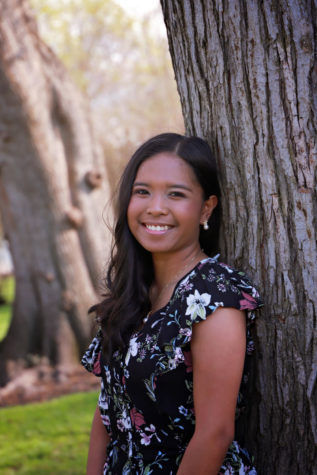PRH teaches health with art
Children learn about health through art projects; designs displayed in local hospital
COURTESY OF HEATHER MAC DERMOTT-HAVEY
WSU’s Children Center partnered with Pullman Regional Hospital for the Health Education and Art (HEART) Program in July. The program aims to help children understand and process the COVID-19 pandemic through art.
October 1, 2020
A local partnership between Pullman Regional Hospital and WSU aims to teach children about health and wellness by integrating art into the learning model.
The hospital’s Health Education and Art program, also known as HEART, helps children adapt to change and engage in learning through art. The program empowers children to express themselves in a variety of ways, said Noel Nicolai, healthier communities coordinator for PRH’s Center for Learning and Innovation.
“There’s a lot of research out there that talks about art as a healing method,” she said. “When they’re processing information, sometimes children don’t have the words to do that.”
Nicolai said she began the HEART program when the pandemic started. She was curious about how children were processing the pandemic and how they perceived it. Nicolai tried the program at a smaller preschool and found that the children enjoyed the program.
By early July, the WSU Children’s Center partnered with PRH for the HEART program. Nicolai said the center’s learning goals fit well with the program. The center uses art to incorporate healthy habits and wellness topics in its curriculum with the overall goal of building a healthier community.
The center serves children of WSU faculty, staff and students. Children who are 6 weeks to 12 years old are enrolled at the center, said Children’s Center Director Heather MacDermott-Havey.
One of the projects required the children to paint canvases with their hands, she said. Teachers then used the paint on the children’s hands as a visual representation of germs.
“It just becomes a natural conversation builder to build on these life skills and effective hand-washing,” MacDermott-Havey said.
For another project, children put paint in spray bottles, she said. Children stood six feet from each other, and each child’s spray bottle had a different paint color. Squeezing the bottle visually represented a sneeze.
If they had paint on them, then the children knew that some of their partner’s paint traveled, despite the distance between them. MacDermott-Havey said teachers used this project to communicate the importance of wearing a mask.
By doing this, children understood why they have to wear a mask in public spaces, including in the center, she said.
The goal of the art projects is to let students feel safe to explore, ask questions, communicate their thoughts and discover new understandings of the world through art, MacDermott-Havey said.
“When you see a child’s art project, it’s just delightful,” she said. “It makes you happy. It makes you go back to your own childhood.”
The children’s artworks are displayed at PRH. MacDermott-Havey said the children at the center are excited to make more art and share their art with the hospital’s staff and patients.
“We need to keep the spirits of our healthcare workers up because their job is 100 percent harder,” Nicolai said. “We also need to transition into a new way of thinking because life, as we know it, has changed.”
Nicolai said PRH staff are going through a difficult period during the pandemic. Encouraging the community is important, she said, as well as building a positive culture around change.
“I love the idea that we’re able to bring the things the children are doing to the hospital, to that community that’s working so hard to care for our people in the community … just to bring them a little bit of joy and delight,” MacDermott-Havey said.











